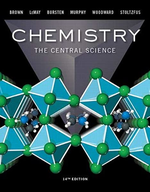?The molecule 2-butene, C4H8, can undergo a geometric change called cis-trans
Chapter 9, Problem 9.116(choose chapter or problem)
The molecule 2-butene, C4H8, can undergo a geometric change called cis-trans isomerization:
As discussed in the “Chemistry and Life” box on the chemistry of vision, such transformations can be induced by light and are the key to human vision.
(a) What is the hybridization at the two central carbon atoms of 2-butene?
(b) The isomerization occurs by rotation about the central C 一 C bond. With reference to Figure 9.29, explain why the \(\pi\) bond between the two central carbon atoms is destroyed halfway through the rotation from cis- to trans- 2-butene.
(c) Based on average bond enthalpies (Table 8.3), how much energy per molecule must be supplied to break the C 一 C \(\pi\) bond?
(d) What is the longest wavelength of light that will provide photons of sufficient energy to break the C 一 C \(\pi\) bond and cause isomerization?
(e) Is the wavelength in your answer to part (d) in the visible portion of the electromagnetic spectrum? Comment on the importance of this result for human vision.
Text Transcription:
pi
Unfortunately, we don't have that question answered yet. But you can get it answered in just 5 hours by Logging in or Becoming a subscriber.
Becoming a subscriber
Or look for another answer
